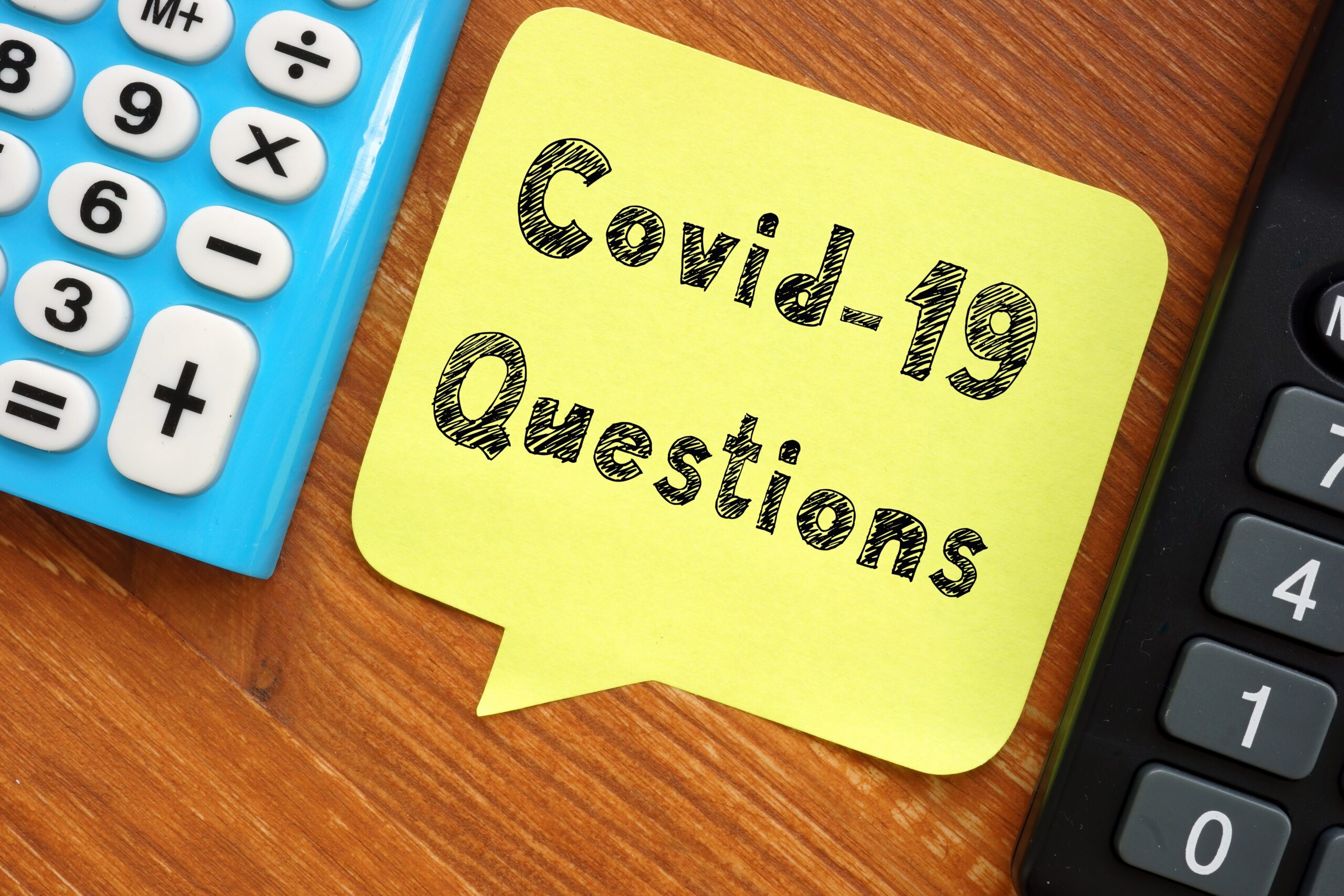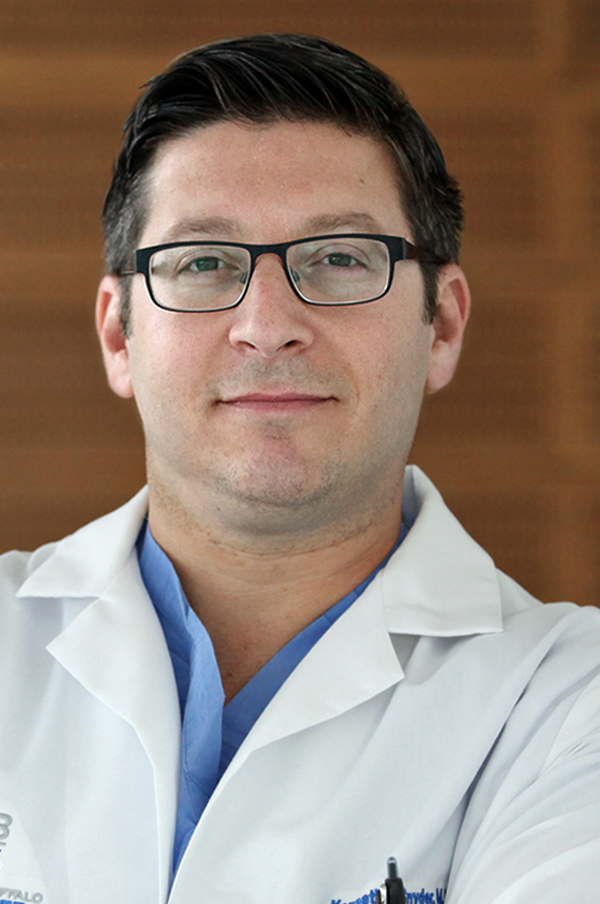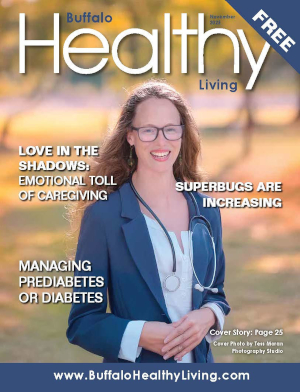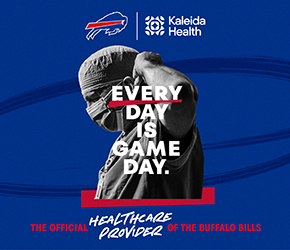COVID-19 Update: Your Questions Answered!

By Kenneth V. Snyder, MD, Ph.D., Vice President Physician Quality, Kaleida Health
and Annette Pinder
Thanks so much to readers who send in questions! We hope that we have answered many of them and welcome you to send in more so that we can continue to update you on this insidious and relentless and challenging virus. We especially look forward to being able to advise you on vaccines which, we are told, are just around the corner. Let’s hope!
Fewer people are dying from COVID. Is the virus weakening?
The virus is not weakening. There are fewer deaths because younger people are getting it. The European Center for Disease Prevention and Control data is similar to the U.S. Most COVID cases and deaths during the first wave were amongst the elderly (80 years or over). Now in the second phase that has flipped —younger people make up the highest number of cases and the elderly the least. Since younger patients do much better with this virus, it is not surprising to see fewer deaths, even with schools opening. Improvements made to help the elderly and a better understanding of the disease process phases have resulted in fewer deaths. See information on a study led by researchers at NYU Grossman School of Medicine that explains why we are seeing reduced death rates in patients with COVID-19.
What are the different phases of COVID?
There are three phases of COVID, each lasting about a week. During phase one the virus replicates quickly creating millions of copies in the body. This is when people are most infectious, even if they are asymptomatic. In phase two, the inflammatory phase, the body works to destroy the virus and symptoms appear, such as fever, hypoxia, coughing, and shortness of breath. Patients with severe symptoms may need hospitalization. If the immune system mounts an even stronger response, an all-out attack called a “cytokine storm” may occur and cause tissue damage, severe illness, and even death. See a video on what happens during a cytokine storm. Micro clots can also start forming in blood vessels. In phase three micro clots and major clotting complications can occur anywhere in the body leading to heart attack, stroke, or pulmonary embolism. Sometimes bacterial infections occur in phase three. Some never experience phase three, phases can overlap, and last longer in those more seriously ill.
What treatments are being used in each phase of the virus?
Physicians practice medicine by understanding a disease and using best available treatments. We don’t always have access to randomized controlled trials providing clear evidenced-based guidance. This is especially true for COVID. We treat patients with therapies that make logical sense as we learn. Phase one, when the virus increases rapidly, is the ideal time for antiretroviral remdesivir and antibody therapies. These include convalescent plasma (part of the blood that contains antibodies from patients who it), monoclonal, and polyclonal cocktails. Antibody therapies block the virus from binding to cells. We use aspirin and Decadron (a corticosteroid) to reduce inflammation and prevent micro clots and watch lab values. If lab values climb it indicates system-wide clotting and the need for aggressive blood thinners. If patients have trouble breathing we try to avoid intubating them by placing them on their stomachs rather than their backs (proning). Proning gets oxygen to areas in the lungs where there is a healthy blood supply. All these treatments have reduced deaths and shortened the duration of illness. Vitamin C and D also have a role in preventing disease but are not treatments.
What was in the Regeneron cocktail President Trump received? Is it a miracle cure?
President Trump received monoclonal antibodies, which work like convalescent plasma and the body’s own antibodies. Giving antibodies helps when patients don’t have enough of their own. Antibodies bond to the spike protein on the virus and prevent it from binding to the ACE2 receptor and getting into our cells. The amazing thing about Regeneron’s monoclonal antibodies is that they come from a unique humanized mouse model. This model, called Velocimmune, makes a heterogeneous mix of massive amounts of antibodies from which a few are selected as a treatment. This is quite a scientific breakthrough. Regeneron’s treatment is not authorized yet for emergency use, but anyone can appeal directly to the company to get it. This is called compassionate use. Initial results of the monoclonal cocktail study are encouraging because it shows lower amounts of the virus in the body with early treatment. Since early treatment is typically when a patient isn’t hospitalized, the researchers will examine its effects in both hospitalized and non-hospitalized patients. This medicine can be given with a small injection under the skin so it doesn’t require hospitalization to be administered.
President Trump also received the drug dexamethasone, why?
Dexamethasone is a steroid, a medication designed to act like the body’s natural hormones to reduce inflammation. A research study of more than 6,000 participants found that dexamethasone reduced deaths by one-third in patients on ventilators, and by one-fifth in patients on oxygen. The NIH recommends using dexamethasone only for COVID-19 patients who are on ventilators or who are receiving supplemental oxygen. Dexamethasone is rarely given to patients in the early stages of the COVID virus as it could be harmful. As described above, dexamethasone only plays a role during phase 2, the inflammatory phase. Because steroids reduce the immune response dexamethasone could, in theory, make the viral stage worse and last longer.
How long do antibodies last in a person who has had COVID?
Most COVID-19 patients develop antibodies about one to three weeks after symptoms start. This is around the time when many patients start to recover. Patients who had more severe disease develop higher levels of neutralizing antibodies, whereas patients who had mild or asymptomatic COVID-19 have low levels of neutralizing antibodies. Studies have shown that these antibodies may disappear after three months. What remains is the T helper cell response, which is the memory element of the immune system. So even though antibodies may fall off, the ability to regenerate them quickly is likely why reinfection should have a must milder and shorter course, as proven in Rhesus monkey experiments.
How long after having COVID-19 is someone no longer contagious?
Most people’s symptoms resolve and are no longer infectious after 10 days. Individuals testing positive who never develop symptoms are likely no longer contagious after 10 days, but there are exceptions. As we describe the typical case, it is important to realize that everyone is an individual, and the course of their disease can be unique. The ability to have rapid, home-based, cheap tests that allow us to test ourselves daily would dramatically improve our ability to answer this question and improve the public health response. (See more on why we need rapid testing now. Dr. Michael Mina, MD, PhD, Assistant Professor of Epidemiology at Harvard T. H. Chan School of Public Health and a core member of the Center for Communicable Diseases, just published a wonderful commentary in the New England Journal of Medicine a few weeks ago on this very topic.
If I was around someone who tested positive, should I quarantine?
Yes. It can take up to 14 days after exposure to become infected. And then the three phases described above may begin to take place. This makes it critical to self-quarantine for 14 days to avoid infecting others. A negative test also cannot predict the future. Dr. Daniel Griffin of Northwell Health uses a great example. If a couple is trying to have a baby and the wife tests herself the following morning and it is negative, that negative test is not a predictor of whether or not the test will be positive in two weeks. In fact, it doesn’t make physiologic sense for the test the next day to predict anything. That is exactly the same analogy with the COVID tests.
When do you think we will see a vaccine?
Hang in there and don’t get so discouraged. And don’t let your guard down. It is important now during cooler months than ever! The good news is there are 45 vaccines in human clinical trials and at least 91 preclinical vaccines under investigation in animals. Researchers are optimistic that a vaccine will be approved before the end of the year, estimating that 20 million doses will initially be available to medical personnel and first responders. It is estimated that 700 million doses will be available for widescale vaccination by March or April 2021.
How can I stay safe until then?
Now, as we approach the holiday season, it is more important than ever to stay safe and remain vigilant in protecting ourselves and others from this virus. Please remember that what works is a multipronged approach. This includes testing, public health measures such as masking, social distancing, and washing hands frequency. Gloves often make things worse because feel like they are safe. They are not. The gloves you wear are virtually touching everything around them and spreading whatever it is they touch. People just need to wash their hands frequently. The same principle applies with regard to opening doors and touching surfaces. Some people use their arms or elbows. But all you have done then is put the contamination on your clothes. You are better off just touching something and then washing your hands. As we move back indoors for colder weather, we must remain vigilant, protect our most vulnerable, and use the knowledge we have learned to slowly return back to work, school, and a new normal without large increases in the local prevalence of the disease. We can all do this together!
Submit your questions for the next issue to info@buffalohealthyliving.com. See more at www.BuffaloHealthyLiving.com/COVIDquestions.












